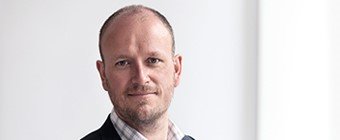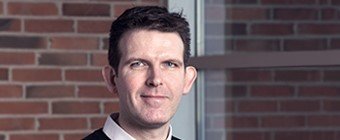sustainable urban development requires traffic solutions - both underground and above ground
23.01.2018 / Michael Knørr Skov and Tommy Olsen
The need for sustainable urban development that benefit people, the economy and the environment is ever present. By understanding the value of green urban spaces we can avoid short-circuiting the development of our cities. Here's how we do it.
Currently, more than half the world's population lives in cities. It has been estimated that, over the next 30 years, surging populations will require sustainable urban planning and the construction of new urban areas to accommodate an extra three billion people.
Explosive population growth will create challenges such as containing traffic congestion, which costs society billions, and fashioning an infrastructure that enables mobility and access to green urban spaces for all citizens.
These challenges require long-term, coherent infrastructure solutions that do more than keep the traffic flowing smoothly. The solutions must consider climate change and enable urban development that supports the health and well-being of urban dwellers in the face of increasing population pressure. And they must do it in an economically responsible manner.
Create space for the cars — underground
Many large cities have already addressed these challenges and invested in new, welcoming urban spaces.
For example, Madrid has completed an extensive infrastructure project, Madrid Rio M30, which has transformed a worn and highly trafficked urban area along the river into a family-friendly park. The previously intense traffic has been moved underground, into 43 kilometres of tunnels. In addition, several metro lines have been built to relieve the city’s dense traffic. In Madrid, as in several other cities, it has been possible to move people to other forms of transportation, without eliminating car traffic.
In Oslo, the southern ring road has been converted into a tunnel across the harbour (Bjørvika), creating a recreational area along the edge of the harbour. This has created a unique connection between the city and the water, to the delight of many.
Similarly, in Stockholm, putting the new northern ring road underground has created a recreational area north of the ring road, with a connection to the city south of the ring road. Currently, Forbifart Stockholm reroutes traffic west of the city in more than 20 kilometres of tunnels, and the upcoming Eastern Connection tunnel will further support mobility in the Swedish capital.
Common to these projects is the realisation that investing in tunnels – and the introduction of user payment to recoup the investment – has improved traffic conditions and created some wonderfully attractive parks and urban spaces where people can meet their fellow citizens in the open air.
Tunnels have improved traffic conditions and created some wonderfully attractive parks and urban spaces where people can meet their fellow citizens in the open air.
Urban development: IS IT WORTH THE INVESTMENT?
In Copenhagen, urban development is also picking up speed, with Metro Cityringen, adding 17 new metro stations and urban spaces; a new Copenhagen–Ringsted railway; and the construction of Nordhavnsvejen (Nordhavn Road), with the subsequent extension of the Nordhavn tunnel to Nordhavn. These major infrastructure projects create a better framework for mobility as well as new and exciting urban spaces.
However, ensuring a sustainable urban development is facing obstacles in cities around the world. A major challenge is that investing in green spaces is rarely economically viable according to the traditional socio-economic models. This is especially true when spaces are created by building traffic tunnels – increasingly seen as the most efficient way of creating elbow room for citizens, as more people move to cities.
In a time of intensified struggle for public resources, political opposition to user payment in some countries and cutting-edge cost–benefit analyses, our experience is that major investment in green urban development is often doomed before it even gets started.
The pertinent questions are: What value can be put on green spaces? Do city dwellers who exercise in the parks and other green areas have fewer health problems and so are less of a burden on the healthcare system? Is human well-being improved by replacing grey concrete with more aesthetically pleasing habitats? Will children play with other children more often in the parks rather than sitting at home alone with electronic devices? Does that have a socio-economic value?
There are many questions, but very few answers, simply because research and tools are lacking in this field. When it comes to the blue elements in a city, for example, investment in climate adaptation, we see valuations growing, because the investment is compared with the enormous sums that insurance companies will have to pay for flood damage and other destructive consequences of climate change.
The risk is that societal investments fail to harvest benefits of green infrstructure because the economic valuation methodology is incomplete.
It’s about citizen well-being
Sustainable solutions must include economic, environmental, and social conditions. It is possible to achieve sustainable urban development that both provide valuable green spaces and solve traffic congestion, as well as downpour and flood protection as part of climate adaptation. That's the way to provide a comprehensive decision support to politicians governing the development of cities around the world.
Cities are already taking important and progressive steps in this direction, but continuous realisation of these investments requires long-term thinking, accommodation of all forms of traffic - both current and future - and the inclusion of citizen demands for vibrant and attractive urban environments.
Get in contact

Michael Knørr Skov
Senior Market Director
Society and Utilities, Denmark
Tel:
+45 56 40 27 81
mks@cowi.com
Get in contact

Tommy Olsen
Major Tunnels Market Director / Head of Sustainability Transportation International
Tunnels and Underground Infrastructure, Denmark
Tel:
+45 28431017
tool@cowi.com
Meet THE EXPERT
I am a civil engineer in city and traffic planning with a focus on congestion and mobility.
Road congestion is an increasing problem in most countries and to strengthen the decision-making in this field, I took part in the development of a method to calculate the socio-economic costs of traffic congestion and time delays. The method is a strong tool for analyses of congestion on major road networks, in corridors and junctions.
I am passionate about the physical development of our society and contributing to well founded and sustainable decisions to create mobility, strong infrastructure and liveable cities.
Meet THE EXPERT
I have a background in geotechnical and construction engineering.
Design and construction is where ideas and design work come to life in the real world, to the benefit of our societies. Project management combines the engineering with leadership, development of projects, people and business. This and translating the needs from the clients into clear goals and direction to the design team is what drives me.
Geotechnical design is one of the most complex and challenging engineering disciplines and it holds a lot of opportunity for an exciting, international career. I have worked on projects in Scandinavia, UK, Ireland, Germany, France, Greece, Turkey, Qatar, China and South Korea.